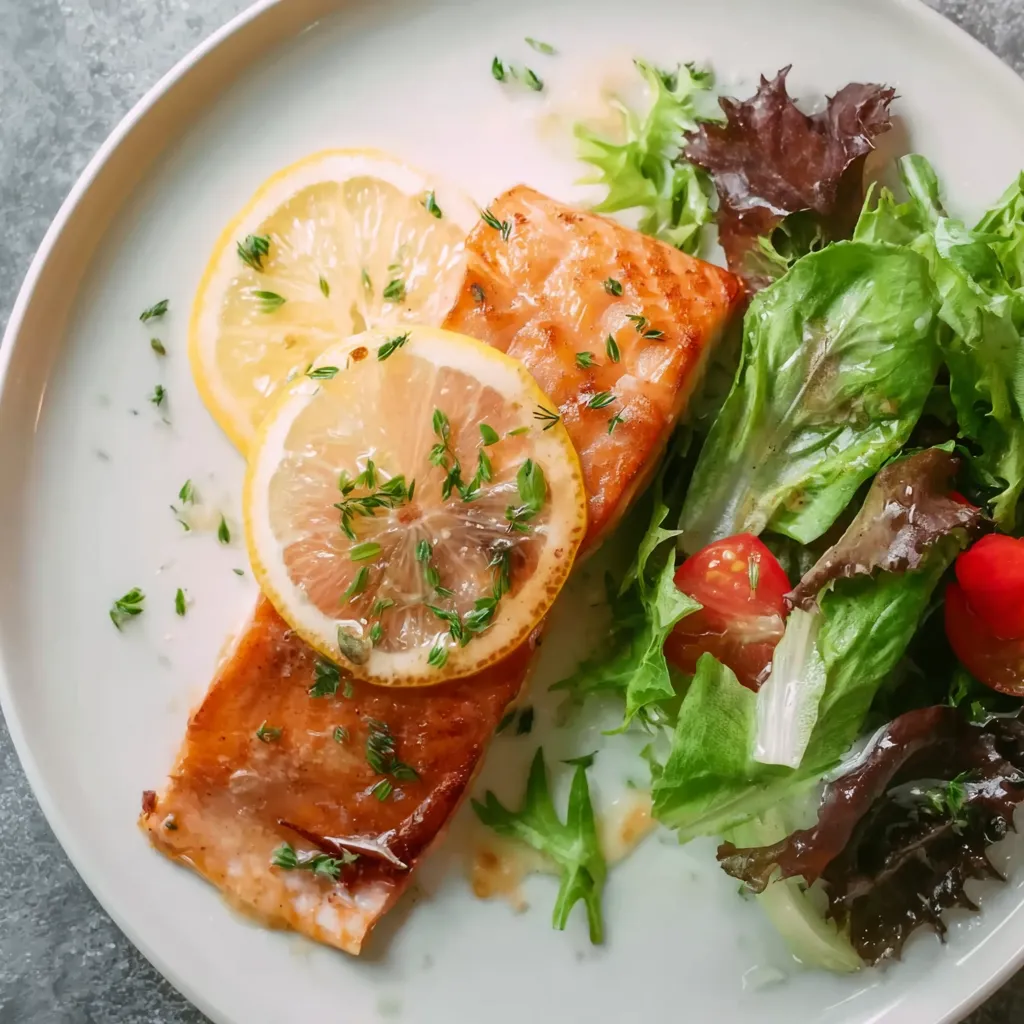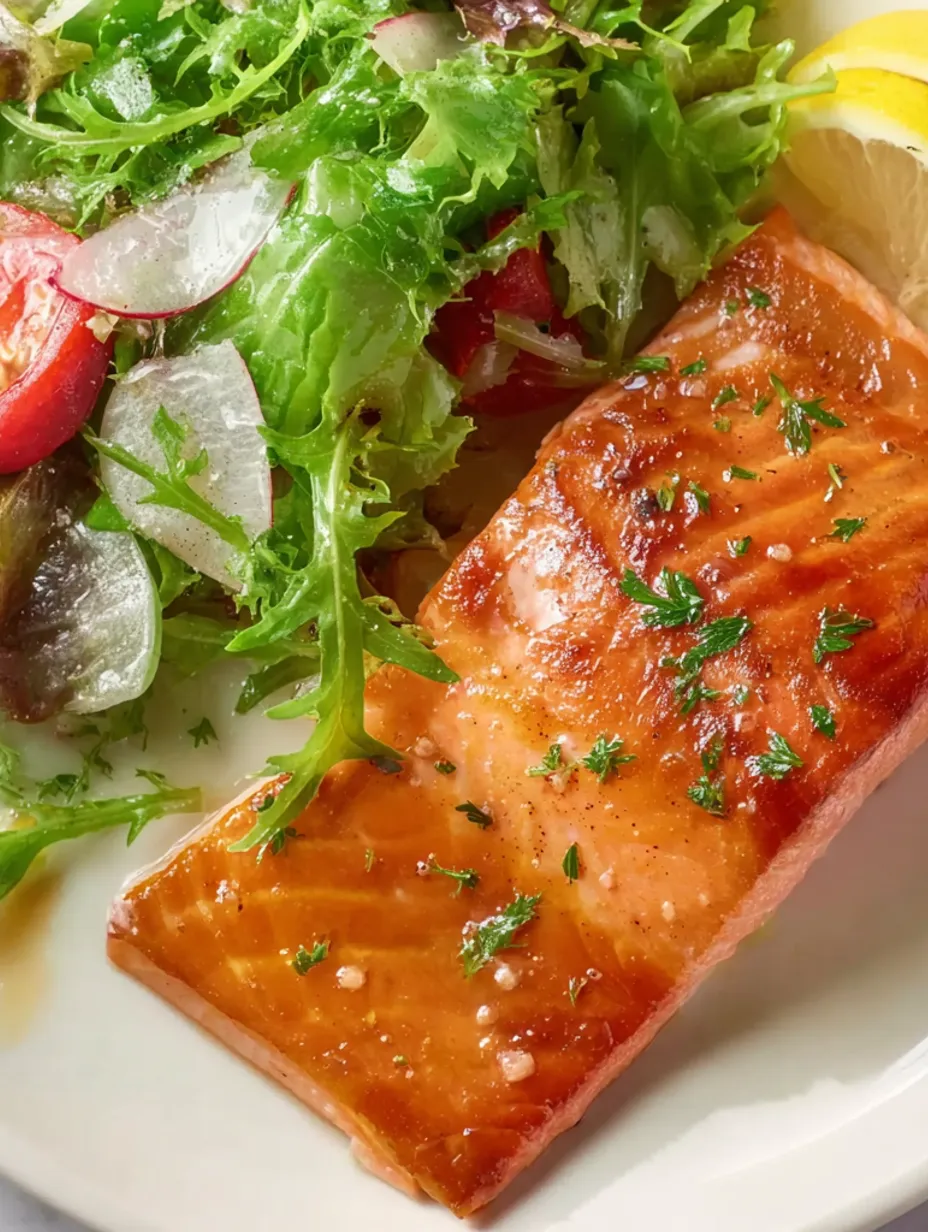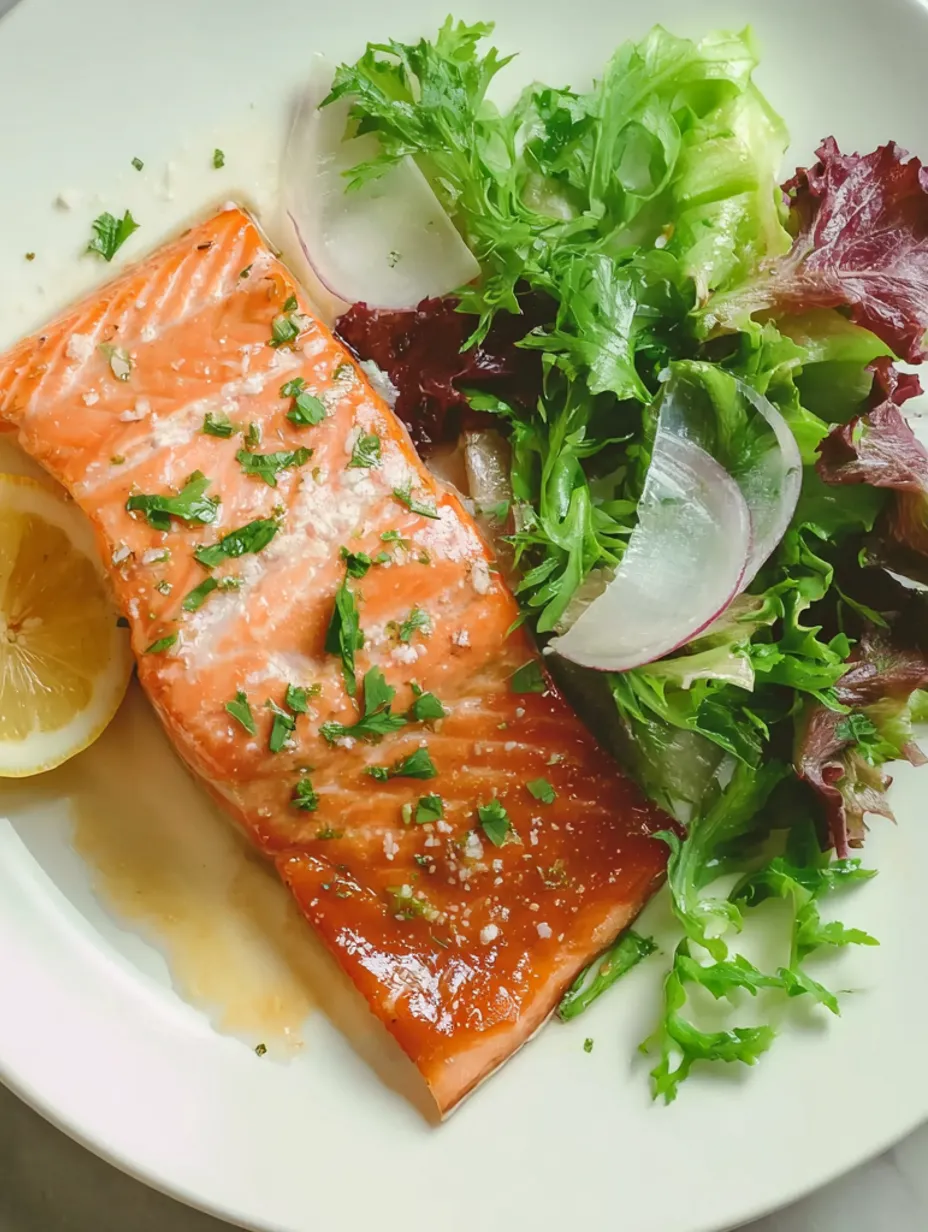 Bookmark
Bookmark
Slow-roasted salmon became my go-to after discovering its tender perfection in a Boston restaurant where I worked in my early twenties. That first bite of medium-cooked salmon opened my eyes to how delicate and buttery fish could be when treated gently. Once I tried slow-roasting at 275 degrees, I never looked back. The method makes salmon incredibly moist and silky. Adding a garlicky lemon butter sauce takes it over the top with richness and balance.
This recipe changed how I cook fish forever. Now my friends always ask for it when they visit.
Ingredients
- Skin-on salmon fillets: six ounces each adds flavor and helps keep moisture in
- Olive oil: ensures even roasting and prevents sticking
- Kosher salt: enhances natural flavor without overpowering
- Freshly ground black pepper: adds subtle heat and aroma
For the optional lemon butter sauce
- Salted butter: provides rich creamy texture
- Garlic: finely minced infuses aromatic depth
- Freshly squeezed lemon juice: brightens with citrus tang
- Honey or maple syrup: softens acidity and rounds out flavor
- Finely chopped parsley: adds fresh herbal finish
 Bookmark
Bookmark
Step-by-Step Instructions
- Preheat the Oven:
- Set your oven to 275 degrees and line a baking sheet with parchment paper to prevent sticking and ensure even roasting
- Prepare the Salmon:
- Lay fillets skin side down and drizzle each with olive oil then season with salt and pepper Use your hands to evenly coat the surface for uniform flavor
- Slow-Roast the Salmon:
- Roast in the preheated oven for 20 to 28 minutes depending on thickness and whether your fillets are wild or farmed The salmon is done when it flakes easily and a thermometer reads between 120 and 130 degrees in the thickest part
- Make the Lemon Butter Sauce:
- While salmon roasts melt butter in a small pan over medium low heat Add garlic and cook until fragrant then stir in lemon juice honey and black pepper Simmer until reduced by half about 5 minutes
- Finish and Serve:
- Use a spatula to gently separate salmon from skin and transfer to plates Drizzle with the lemon butter sauce and top with parsley if using Serve immediately
Storage Tips
Store leftovers in an airtight container in the fridge for up to three days Reheat gently at low heat to maintain moisture or enjoy chilled over salad
Ingredient Substitutions
Maple syrup can replace honey for a deeper sweetness Use unsalted butter and add a pinch of salt if needed If parsley is not available try fresh dill or chives
 Bookmark
Bookmark
Serving Suggestions
Pair with roasted potatoes or a crisp green salad Add steamed green beans or asparagus for a full meal Serve over rice or quinoa to soak up extra sauce
Cultural Context
Slow roasting has long been a gentle method in European kitchens where preserving moisture in fish was prized This modern version gives home cooks a foolproof way to get restaurant results
Frequently Asked Questions About Recipes
- → Why is slow-roasting salmon better?
Slow-roasting at a low temperature keeps the salmon moist and tender by allowing the proteins to cook evenly without tightening too fast from high heat.
- → What temperature should the salmon reach?
The thickest part of the fillet should read between 120 to 130°F for the perfect doneness and texture.
- → Can I use frozen salmon?
Yes, just be sure to thaw the fillets completely in the fridge before roasting for even cooking and best results.
- → What type of salmon works best?
Both wild-caught and farmed work well, but farmed salmon has a higher fat content that yields a more buttery result.
- → Is the lemon butter sauce necessary?
It’s optional but highly recommended. The sauce adds flavor depth with garlic, lemon, and a touch of sweetness that complements the salmon beautifully.
